宇宙科学談話会
ISAS Space Science Colloquium & Space Science Seminar
FY2024
Hard X-ray Polarization observations from celestial objects by the international balloon-borne mission, XL-Calibur
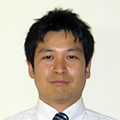 Dr. Hiromitsu TAKAHASHI
Dr. Hiromitsu TAKAHASHI
Hiroshima University
The hard X-ray polarimeter mission, XL-Calibur, is an international project among Japan, the U.S., and Sweden. The Japanese FFAST mirror is equipped to focus 15-80 keV hard X-ray from celestial sources, and achieves the highest sensitivity. In July 2024, it flew from Sweden to Canada for about 1 week and successfully performed observations of Crab (pulsar-wind nebula) and Cygnus X-1 (black-hole X-ray binary) from the stratosphere 40 km above the ground.
Polarimetry is a powerful observational tool that provides physical quantities (such as magnetic field and geometric structure) independent of imaging, photometry, and spectroscopy. However, the high energy band of X-rays and gamma rays is still unexplored, and polarization observations of soft X-rays of 2-8 keV has just started with the IXPE satellite launched in 2021. It is important to perform broadband polarization observations, and we are promoting the XL-Calibur balloon-borne experiment (PI: H. Krawczynski, WUSTL) to observe 15-80 keV hard X-rays. In this talk, we will report on the progress of the development and data analysis of the XL-Calibur mission and future plans for the Antarctic flight.
Conference Hall (2nd floor/ Research and Administration Building A), Via Zoom
TEXUS観測ロケットを用いた冷炎ダイナミクスに関する微小重力実験(Phoenix-2)の概要とフライト結果
 田辺 光昭(たなべ みつあき)氏
田辺 光昭(たなべ みつあき)氏
日本大学
エンジン燃焼で問題となる爆発現象の予測に必要となる実験データ取得を目的とした観測ロケット実験「Phoenix-2」について紹介する。この実験では爆発のきっかけの一つとして知られる冷炎(1000K以下の低温の炎)の発生タイミングや大きさなどの基礎特性データを取得した。冷炎現象解明とモデル化を進めている日独国際共同研究の一環で,モデルの検定のために実施したものである。直径1mm程度の複数の燃料液滴を高温空気中に挿入し,自発的に生じる冷炎の挙動を光学観測する実験装置を開発した。この装置を2024年3月24日スウェーデン・エスレンジよりTEXUS60号機で打ち上げ,一部不具合はあったものの所定の微小重力場での実験データを得た。装置の概要と得られた科学的成果,およびISS実験に向けての展望を概説する。
研究・管理棟(新A棟)A会議室(1257), Zoom開催
A primer on Pseudospectral Convex Optimization with Applications in Entry, Descent, and Landing
 マルコ サリアーノ 氏(Dr. Marco Sagliano)
マルコ サリアーノ 氏(Dr. Marco Sagliano)
ドイツ航空宇宙センター(German Aerospace Center (DLR))
In recent years convex optimization has become a prominent technology in space applications, with a special emphasis on Entry, Descent, and Landing scenarios. In this talk we will follow the genesis and the maturation of pseudospectral convex optimization methods for EDL, from the basic 3DoF formulation of rocket landing to the more advanced and realistic applications, including NASA's high-mass entry demonstrator for Mars landing, and the formulation for the CALLISTO demonstrator, a reusable rocket currently developed by DLR, JAXA and CNES together.
Conference Hall (2nd floor/ Research and Administration Building A), Via Zoom
衛星・探査機のラッシュ時代における衛星地上局ネットワーク構築の必要性について
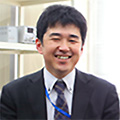 中城 智之(なかじょう ともゆき)氏
中城 智之(なかじょう ともゆき)氏
福井工業大学
近年、宇宙が人類の活動の場として注目を集めており、民間や大学が衛星・探査機を開発して地球周回軌道はもちろん月や惑星の探査に乗り出す大航海時代が到来しようとしています。その一方で、現状にはシステムとしての観点からいくつかのボトルネックがあります。その一つが衛星地上局です。衛星・探査機が宇宙で活躍するには、いうまでもなく衛星地上局との通信が必要不可欠ですが、衛星・探査機の計画数に比して衛星地上局の数が不足しています。また、衛星地上局は単独では堅牢かつ効率的な運用が難しいため、ローカルおよびグローバルな視点での衛星地上局の連携が不可欠です。このような観点から、福井工業大学では衛星・探査機のより良い通信環境の構築に貢献することを目的として、口径13.5mのパラボラアンテナを整備し国内・海外地上局との連携も視野に活動をしております。本講演ではその活動について紹介します。
研究・管理棟(A棟) 2階会議場(1236,1237), Zoom開催
Observation of 3D magnetic field dynamics in the solar atmosphere by the Sunrise III balloon-borne telescope
 勝川 行雄 教授(Dr. Yukio KATSUKAWA)
勝川 行雄 教授(Dr. Yukio KATSUKAWA)
国立天文台(NAOJ)
Magnetic fields in the solar atmosphere are the driving source of hot coronae, solar winds, and flares and are fundamental information as a boundary condition of the heliosphere. Because magnetic structures pervading photosphere-chromosphere-corona drastically change their configuration, it is demanded to observationally obtain magnetic fields directly by a highly sensitive and broad wavelength spectro-polarimetric observation. To do it, we built the Sunrise III balloon-borne solar telescope, which was the third flight of the international stratospheric balloon project Sunrise. It carried a 1-meter aperture telescope and provided a unique platform to perform seeing-less observations at UV-Visible-IR wavelengths. Our group developed a near-infrared instrument called SCIP (Sunrise Chromospheric Infrared spectroPolarimeter) to observe many spectral lines sensitive to magnetic fields in both photosphere and chromosphere with a high angular resolution of 0.2" which is higher than that of the HINODE Solar Optical Telescope. Sunrise III conducted a successful 6.5-day flight in July 2024, capturing unprecedented data on the solar atmosphere and magnetic fields for various targets including quiet regions, sunspots, an emerging flux region, and a flare. In this talk, we overview the instrument development of Sunrise III and present a preliminary report of the data obtained during the flight.
Conference Room A (1257) (2nd floor/ New Building A), Via Zoom
Understanding Exoplanetary Diversity, Origins, and Habitability: The Role of JAXA Missions in the Next Chapter of Exoplanet Science
 生駒 大洋 氏(Dr. Masahiro Ikoma)
生駒 大洋 氏(Dr. Masahiro Ikoma)
国立天文台 科学研究部(Division of Science, NAOJ)
The field of exoplanet science has experienced remarkable growth since its first discovery in 1995 and is now approaching its 30th anniversary. In the next decade, we expect to detect and characterize more than ten times as many exoplanets as have been discovered to date. JAXA/ISAS is actively involved in planning several key space telescope missions, significantly advancing exoplanet exploration and characterization. These missions will enhance our understanding of the diversity, formation, and evolution of exoplanetary systems. They will also provide crucial insights into how Earth and its habitability are placed in the broader galactic context. This talk will address the anticipated scientific progress these missions will promote, the rationale behind the necessity for multiple missions, and the synergies between them. I will also review past achievements and discuss future directions in the field of exoplanet science.
Conference Hall (2nd floor/ Research and Administration Building A), Via Zoom
折紙がつなぐ芸術・科学・産業
 舘 知宏(たち ともひろ)先生
舘 知宏(たち ともひろ)先生
東京大学大学院総合文化研究科
伝統的な芸術である折紙は、近年では科学や工学の視点からも注目を集めています。本講演では、紙を折る手作業から研究課題を見つけた体験、理論の構築や計算による問題解決、そして多分野の専門家と協力して応用するまでの過程を紹介します。また、自然と芸術に見られる「折り」の原理を統合し、適応的で多機能な人工物を創り出すことを目指す「折紙がつなぐ」プロジェクトについてもお話しします。このプロジェクトは、大量消費から適応的なデザインへの転換を図り、個々人の多様なニーズや状況に応じた設計を目指しています。さらに、アーティスト、科学者、学生とのコラボレーションによって進展する教育と研究の枠組みも紹介します。
研究・管理棟(新A棟)A会議室(1257), Zoom開催
湖底の泥に刻まれた「暴れる気候」と人間の歴史
 中川 毅(なかがわ たけし)氏
中川 毅(なかがわ たけし)氏
立命館大学 古気候学研究センター
気候の未来に対して、誰もが不安を感じる時代になっています。では地質学的な時間スケールで見たとき、「現代」とはいったいどのような時代なのでしょう。氷期の地球は、現代とはまるで似ていない、激しい変動が日常的に繰り返す不安定な世界でした。その時代を、人類は狩猟採集によって生き延びていました。いっぽう、氷期が終わってから現在までのおよそ1万年間は、気候が例外的に温暖で、そして安定しています。その1万年の間に、人類は農耕を開始し、文明を発展させてきました。しかし現代の地質学は、そのような安定した時代が永遠には続かないことを示唆しています。去年までの常識が通用しなくなる「その日」は、次はいつ訪れるのでしょう。その時のために、人間は何をしておくべきなのでしょう。現代に突きつけられた課題の本当の意味について、最新の地質学の立場から考察します。
研究・管理棟(A棟) 2階会議場(1236,1237), Zoom開催
Development and Flight Result of Nanosatellite BEAK for Demonstration of Nano-size Planetary Atmospheric Probe Technology
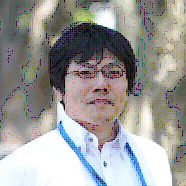 Dr. Nagata Yasunori
Dr. Nagata Yasunori
JAXA
The nanosatellite BEAK (Breakthrough by Egg-derived Aerocapture Kilt vehicle) aimed to demonstrate advanced technologies for future planetary exploration using nano-size planetary atmospheric probe. BEAK is a 3U-sized nanosatellite integrating the key technologies required for planetary atmospheric entry within its size, thus it is a demonstrator of nano-size planetary atmospheric entry exploration technology. BEAK was designed to demonstrate orbit change through drag modulation by deployable aeroshell separation and orbit change by micro-thruster. These will lead to aerocapture technology for planetary orbit insertion of micro-spacecraft and control technology for landing point of nano-lander. Moreover, BEAK was designed to demonstrate lightweight deployable aeroshell using shape memory alloy, and we will acquire spacecraft design technology to realize a nano-lander to reach the planetary surface. BEAK was inserted into low Earth orbit by the JEM Small Satellite Orbital Deployer (J-SSOD) from the ISS on December 18, 2023, and is estimated to have flown for 193 days before entering the atmosphere and burning out. Although only a part of the satellite's functions were verified due to in-flight device malfunctions, a flight-capable nanosatellite integrating a number of atmospheric entry technologies was successfully developed. In this talk, we summarize the development and flight results of the BEAK nanosatellite and the perspectives for the future.
Conference Hall (2nd floor/ Research and Administration Building A), Via Zoom
From Hera to RAMSES: ESA planetary defense missions and international cooperation
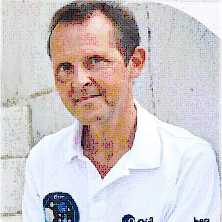
Dr. Patrick Michel
CNRS, Côte d'Azur Observatory, Lagrange Laboratory, Nice, France
The Hera mission of the European Space Agency was launched successfully on October 7, 2024, to the binary asteroid Didymos and will contribute to the first asteroid deflection test within the international cooperation called AIDA (Asteroid Impact and Deflection Assessment) supporting the NASA DART and ESA Hera missions. It is now developing the RAMSES mission to the asteroid Apophis that will come very close to the Earth on Friday April 13, 2029, which final approval will take place at the ESA Council at Ministerial Level in 2025. Both missions are occurring in the framework of an international cooperation that is at the heart of planetary defense, with contribution by JAXA. I will recall the objectives of planetary defense, in particular the need to characterize small near-Earth asteroids from space, to which the Hayabusa, Hayabusa2 and Hayabusa2# mission contribute greatly, and present the Hera mission, its goals and next milestones, as well as the RAMSES one.
Conference Hall (2nd floor/ Research and Administration Building A), Via Zoom
Differentiable intelligence in space flight dynamics
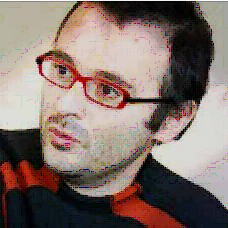
Dr. Dario Izzo
Advanced Concept Team/ European Space Research and Technology Centre/ European Space Agency
In this seminar, I will examine the latest developments in space flight dynamics through a concept I term differentiable intelligence. This emerging framework, which builds on advancements in automated differentiation methods and neural network models, is changing the field of aerospace engineering. I will explore several initiatives--such as eclipseNETs, G&CNETs, thermoNETs, and geodesyNETs--each showcasing the significant role of differentiable intelligence in different areas of space flight dynamics and control. Additionally, I will introduce the novel concept of event transition tensors for the representation of differentiable events, highlighting how these approaches can be applied in the design of sophisticated space missions. By reviewing these diverse yet interconnected projects, I will demonstrate how the collective use of differential information is driving increased efficiency across various aspects of space flight mechanics.
Conference Hall (2nd floor/ Research and Administration Building A), Via Zoom
New ATHENA, ESA L4 Enceladus mission design concept (tentative title)
 Dr. Frederic Safa
Dr. Frederic Safa
Directorate of Space Science, Head of Future missions department (SCI-F), ESA.
Dr Frederic Safa is leading the Future Missions department in the ESA science directorate. He will present the evolution of the X-ray observatory L-mission, from the early Cosmic Vision studies (2008) to the newAthena mission that is now planned for launch around 2037, shortly after LISA. NewAthena will close the Cosmic Vision cycle that was initiated in 2006-2007.
The talk will also address the successor of Cosmic Vision, Voyage 2050, through the definition of the L4 mission to the Saturn system. The mission concept has been elaborated in close coordination with the scientific community with the objective to timely land on the Enceladus south pole in the 2050s under good sun-illumination conditions. The mission is proceeding in its definition and technology maturation phase and the spacecraft development is planned to start in 2035.
Conference Hall (2nd floor/ Research and Administration Building A), Via Zoom
Whispers from other Worlds: NASA's Search for Life in the Cosmos
Dr. Thomas H. Zurbuchen
Professor and Director ETH Zurich | Space, Zurich, Switzerland.
NASA Associate Administrator, Science Mission Directorate, 2016-2022
Whether life exists beyond Earth is among the most exciting -- and toughest -- mysteries that science can solve. For millennia, humans have wondered whether we were alone in the cosmos, but those musings lived almost exclusively in the realm of philosophy, not science.
Finding life beyond Earth is now one of NASA's most challenging goals, and it is one of the most compelling. We will first frame the discussion of looking for extraterrestrial life in the context of the famed 1961 Drake equation, a framework that connects physical, chemical and biological processes with the development of detectable civilizations within our own galaxy. And, though the Drake equation's original form has survived unchanged, we will highlight some changes in our understanding and definition of the equation's variables -- modifications that are a direct result of our growing understanding of life's tenacity on our home world. Subsequently, our focus will shift towards ongoing and upcoming space missions directed at targets within our solar system. Simultaneously, we will delve into endeavors aimed at identifying potentially habitable worlds orbiting distant stars.
Conference Hall (2nd floor/ Research and Administration Building A), Via Zoom
1) Overview of NASA's Astromaterials sciences (仮題)
2) Water on the Moon and Mars (仮題)
1) Dr. Kathleen Vander Kaaden
NASA's Chief Scientist for Astromaterials Curation, NASA Headquarters
2) Dr. Francis McCubbin
NASA's Astromaterials Curator, NASA's Johnson Space Center
Conference Hall (2nd floor/ Research and Administration Building A), Via Zoom
NASA Science and Exploration
Dr. Nicola Fox
NASA's Science Mission Directorate
Conference Hall (2nd floor/ Research and Administration Building A), Via Zoom
BepiColombo exploration of a complex Hermean volcanic history
Dr. Sebastien Besse
European Space Astronomy Centre
The innermost planet of our Solar System is a rich and diverse environment despite its proximity to the Sun. Among many of the uniqueness of Mercury, we can name its active magnetic field and extremely dense interior. Mercury's surface shows tectonic features and mysterious hollows whose origin is still strongly debated. While Mercury does not have an atmosphere, its exosphere is an important link between the surface and the space environment. All these fascinating aspects of Mercury will be further analysed with the ambitious objectives of the ESA/JAXA BepiColombo mission on its way to Mercury since 2018. The Mio spacecraft provided by JAXA will explore Mercury's environment while the MPO spacecraft provided by ESA will focus more on Mercury's surface. During this presentation, we will jointly explore the complexity of the BepiColombo mission, its scientific objectives and questions, and the opportunities for joined observations between the two spacecraft. Since not all of Mercury's science objectives can be covered in a reasonable amount of time, a focus on the Hermean volcanic environment will be a good proxy to demonstrate the importance of BepiColombo observations in further understanding the formation and evolution of Mercury.
Conference Hall (2nd floor/ Research and Administration Building A), Via Zoom
CSIRO Space & Astronomy
Dr.Mark C. M. Cheung
Commonwealth Scientific and Industrial Research Organisation
As Australia's national science agency, CSIRO solves the greatest challenges through innovative science and technology. In this talk, we present CSIRO's engagement in activities in the space and astronomy realm. At the Australia Telescope National Facility, we develop and operate world-leading radio telescopes exploring the furthest reaches of the universe. Inyarrimanha Ilgari Bundara, our Murchison Radio-astronomy Observatory will be the site for the SKA-Low Telescope. We operate ground stations for tracking of deep space missions on behalf of NASA and ESA, and support JAXA ballooning campaigns in Australia. CSIRO's Space Program brings together technical capabilities across the organisation to advance space science, technology and exploration. We have deep expertise in Earth observation and manage Australia's share of observing time on the NovaSAR-1 mission. We are leading the AquaWatch Australia mission, which will develop a platform for integrating in-situ and satellite observation data for monitoring water quality. This talk will also briefly review CSIRO's role in the development of heliophysics, and outline our aspirations for future contributions.
Conference Hall (2nd floor/ Research and Administration Building A), Via Zoom
